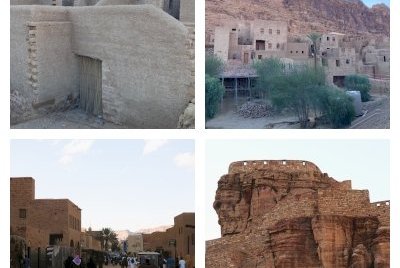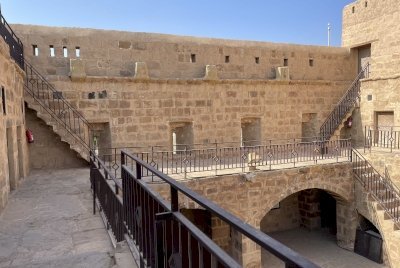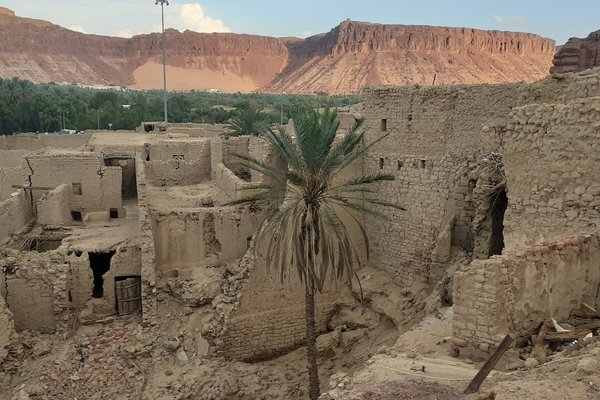Saudi Arabia
Syrian Hajj Road
Site Info
Official Information
- Full Name
- Syrian Hajj Road (ID: 6027)
- Country
- Saudi Arabia
- Status
-
On tentative list 2015
Site history
History of Syrian Hajj Road
- 2015: Added to Tentative List
- Added to tentative list
- Type
- Cultural
- Criteria
Links
- UNESCO
- whc.unesco.org
All Links
UNESCO.org
- whc.unesco.org — whc.unesco.org
Community Information
- Community Category
- Religious structure: Islamic
Travel Information
Recent Connections
News
No news.
Community Reviews
Show full reviews
A short update on one of the components, AlUla Old Town. It is now open to visitors although (re)construction works are still going on at the lower parts and men in yellow vests and hard hats are a common sight. These troops of Pakistani migrant workers really know their way with adobe!
The upper road (“Market Street”) has been turned into a wide shopping and entertainment street with restaurant terraces and live music. There are also a few information panels that hint at the former importance of the town, which was at a strategic position on trade and Hajj routes from the 12th to the 20th centuries. For the pilgrims, this may just have been a resting place – I did not notice any sites of specific religious importance.
A structure that stands out is the small stone castle that towers above the town. It is said to have 10th-century origins. Like the town that was considered a safe place to spend the night (the city gates were closed during the night), it provided a secure place for example for storing goods.
Keep reading 0 comments
Syrian Hajj road is another of the long-winded multi-site serial nomination to be inscribed, along with Dar Zubaydah (Saudi-Iraqi road) and Egyptian road. This pilgrimage route connected Mecca and Medina with Syrian capital Damascus and measured 1307 kilometres in length. It was also called Attabukiya. It consists of places of refuge for pilgrims and security posts (forts, castles), markets (pilgrims took different products and wares from their country to trade at these places, changing items of value into local currency to fund their pilgrimage), bridges, canals and water reservoirs.
We have visited or seen three different components of this proposed site. The best and most convenient visit is definitely the Al Siker Fortress in Tabuk, also called Tabuk Castle (it's actually quite close to the Tabuk Hejaz Railway station). Although legends say that a castle stood on the site for several millennia BC, it is of Ottoman origin, dating from 1559. Its purpose was to protect a nearby reservoir and provide accommodation for pilgrims. The fortress has two floors around the perimeter of which are rooms now used as a museum, a mosque and a courtyard. The museum houses historical artefacts and many infopanels providing information about the Syrian pilgrimage route as well as the most famous historical figures who walked it (Ibn Battuta, Evliya Celebi). There are parking spots at the beginning of the pedestrian section the fort is located at. Information is provided in English on the infoboards, which is appreciated.
Moving on to AlUla from …
Keep reading 0 comments
